Tuesday, September 23, 2008
The Ant works hard in the withering heat all summer building its house and laying up supplies for the winter.
The Grasshopper thinks the Ant is a fool and laughs dances plays the summer away.
Come winter, the Ant is warm and well fed. The Grasshopper has no food or shelter so he dies out in the cold.
New Indian Version:
The Ant works hard in the withering heat all summer building its house and laying up supplies for the winter.
The Grasshopper thinks the Ant's a fool and laughs dances plays the summer away.
Come winter, the shivering Grasshopper calls a press conference and demands to know why the Ant should be allowed to be warm and well fed while others are cold and starving.
NDTV, BBC, CNN show up to provide pictures of the shivering Grasshopper next to a video of the Ant in his comfortable home with a table filled with food.
The World is stunned by the sharp contrast. How can this be that this poor Grasshopper is allowed to suffer so?
Arundhati Roy stages a demonstration in front of the Ant's house.
Medha Patkar goes on a fast along with other Grasshoppers demanding that Grasshoppers be relocated to warmer climates during winter .
Mayawati states this as `injustice' done on Minorities.
Amnesty International and Koffi Annan criticize the Indian Government for not upholding the fundamental rights of the Grasshopper.
The Internet is flooded with online petitions seeking support to the Grasshopper (many promising Heaven and Everlasting Peace for prompt support as against the wrath of God for non-compliance) .
Opposition MPs stage a walkout. Left parties call for 'Bengal Bandh' in West Bengal and Kerala demanding a Judicial Enquiry.
CPM in Kerala immediately passes a law preventing Ants from working hard in the heat so as to bring about equality of poverty among Ants and Grasshoppers.
Lalu Prasad allocates one free coach to Grasshoppers on all Indian Railway Trains, aptly named as the 'Grasshopper Rath'.
Finally, the Judicial Committee drafts the ' Prevention of Terrorism Against Grasshoppers Act' [POTAGA], with effect from the beginning of the winter.
Arjun Singh makes 'Special Reservation ' for Grasshoppers in Educational Institutions in Government Services.
The Ant is fined for failing to comply with POTAGA and having nothing left to pay his retroactive taxes,it's home is confiscated by the Government and handed over to the Grasshopper in a ceremony covered by NDTV.
Arundhati Roy calls it ' A Triumph of Justice'.
Lalu calls it 'Socialistic Justice '.
CPM calls it the ' Revolutionary Resurgence of the Downtrodden '
Koffi Annan invites the Grasshopper to address the UN General Assembly.
Many years later...
The Ant has since migrated to the US and set up a multi-billion dollar company in Silicon Valley,
100s of Grasshoppers still die of starvation despite reservation somewhere in India ,
..AND
As a result of losing lot of hard working Ants and feeding the grasshoppers, India is still a developing country...
Source: Anonymous
Myanmar Frees Longest-Serving Political Prisoner

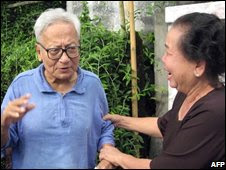 YANGON, Myanmar -- Myanmar's longest-serving political prisoner, journalist Win Tin, was freed from Insein Prison on Tuesday after 19 years behind bars, family members said.
YANGON, Myanmar -- Myanmar's longest-serving political prisoner, journalist Win Tin, was freed from Insein Prison on Tuesday after 19 years behind bars, family members said.The 78-year-old Win Tin, a poet and editor who was a close aide of detained opposition leader Aung San Suu Kyi, was arrested during a 1989 crackdown on opposition politicians. He was sentenced three times to a total of 21 years in prison.
Win Tin's release came as part of an amnesty granted to 9,002 prisoners around the country. Family members said Win Tin was in "good health," despite recent reports that he was ailing. They spoke on condition of anonymity, fearing reprisals from the junta.
The United Nations and international-rights groups had repeatedly called for the release of Win Tin and referred to him as the longest-serving political prisoner in Myanmar. Amnesty International called for his release in July, saying Win Tin had been in solitary confinement for most of his imprisonment and needed urgent medical attention.
Win Tin was most recently sentenced in March 1996 to an additional seven years of imprisonment for writing to the U.N. about prison conditions and for writing and circulating antigovernment pamphlets in prison, which authorities characterized as "secretly publishing propaganda to incite riots in jail," Amnesty said.
State-controlled media announced the prisoner amnesty, saying freedom was granted to prisoners around the country who exhibited good "moral behavior."
"The government is trying to transform these convicted prisoners into citizens who can contribute to the building of a new nation," the Myanma Ahlin newspaper said, adding they were released "so they could participate in the fair elections to be held in 2010." The elections are part of the junta's long announced "roadmap to democracy," which will give voters the first chance to cast ballots since 1990. Critics say the roadmap is a sham designed to cement the military's power.
In 1990, Ms. Suu Kyi's opposition party won a landslide victory that the junta refused to acknowledge. Instead, the generals stepped up arrests and repression of dissidents. Ms. Suu Kyi has spent more than 12 of the past 19 years in detention and is currently under house arrest.
The government often grants amnesties to mark important national days, but most of those released are petty criminals. Tuesday's amnesty came ahead of the one-year anniversary of the junta's deadly Sept. 26-27, 2007, crackdown on antigovernment protests that were led by Buddhist monks.
The U.N. estimated at least 31 people, including a Japanese photojournalist, were killed when the army fired on peaceful protesters. Hundreds of activists were arrested in the crackdown and many fled the country or went underground.
Monday, September 15, 2008
Unnecessary Knowledge
- Charlie Chaplin once won third prize in a Charlie Chaplin look-alike contest.
- 50% of female polar bears also have a penis. 4.05
- An adult giraffe's kick is so powerful that it can decapitate a lion.
- The word “lethologica” describes the state of not being able to remember the word you want.
- Turtles can breathe through their butts
- 45% of Americans don't know that the sun is a star.
- The brain continues sending electrical wave signals for 37 hours after death
- Every year approximately 2,500 left-handed people are killed by using object or machinery designed for right-handed people.
- In ancient Rome, when a man testified in court he would swear on his testicles.
- Dueling is legal in Paraguay as long as both parties are registered blood donors.
- On average, 12 newborns will be given to the wrong parents every day.
- Between 1902 and 1907, the same tiger killed 434 people in India.
- During their periods womens middle fingers shrink. No one knows why.
- In “Silence of the Lambs”, Hannibal Lector (Anthony Hopkins) never blinks.
- It would take 1.2 million mosquitoes biting you simultaneously to drain all your blood.
- Los Angeles’ full name is “El Pueblo de Nuestra Senora la Reina de los Angeles de Porciuncula.”
Source - http://www.unkno.com/toplist/
Friday, September 12, 2008
The Most Influential Women of our Time!!!
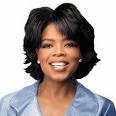
 Oprah Gail Winfrey
Oprah Gail WinfreyOprah Gail Winfrey (born January 29, 1954), often referred to simply as Oprah, is an American television host, media mogul, and philanthropist. Her internationally-syndicated talk show, The Oprah Winfrey Show, has earned her multiple Emmy Awards and is the highest-rated talk show in the history of television. She is also an influential book critic, an Academy Award-nominated actress, and a magazine publisher. She has been ranked the richest African American of the 20th century, the most philanthropic African American of all time, and the world's only black billionaire for three straight years. She is also, according to some assessments, the most influential woman in the world.
Born in rural Mississippi to a poor teenaged single mother, and later raised in an inner city Milwaukee neighborhood, Winfrey was raped at the age of nine, and at fourteen, gave birth to a son who died in infancy. Sent to live with the man she calls her father, a barber in Tennessee, Winfrey landed a job in radio while still in high school and began co-anchoring the local evening news at the age of 19. Her emotional ad-lib delivery eventually got her transferred to the daytime talk show arena, and after boosting a third-rated local Chicago talk show to first place, she launched her own production company and became internationally syndicated.
Credited with creating a more intimate confessional form of media communication, she is thought to have popularized and revolutionized, the tabloid talk show genre pioneered by Phil Donahue, which a Yale study claimed broke 20th century taboos and allowed gays, transsexuals, and transgender people to enter the mainstream. By the mid 1990s she had reinvented her show with a focus on literature, self-improvement, and spirituality. Though criticized for unleashing confession culture, and promoting controversial self-help fads, she is generally admired for overcoming adversity to become a benefactor to others.
Yelena Isinbayeva
Two-time Olympic Champion - Women's Pole Vault, Athens 2004, Beijing 2008
Holder of 24 world records in Women's Pole Vault
Yelena Isinbayeva was born on June 3, 1982 in Volgograd, Volgograd Region. From the age of 5 to 15, Isinbayeva trained as a gymnast in her hometown of Volgograd. She ultimately left the sport because as she grew she was considered too tall to be competitive in gymnastics, eventually reaching a height of 1.74 m (5' 8½")
In 1998, after graduating from a engineer-technical preparatory school, Isinbayeva entered the regional Reserve Olympians' College (UOR). In her first major competition, the 1998 World Junior Championships in Annecy, France, Yelena jumped 4.00 meter but this left her 10 cm away from securing a medal. In 1999, Yelena improved and won at the World Youth Games in Bydgoszcz, Poland with a vault of 4.10 m to take her first gold medal.
At the 2000 World Junior Championships, Isinbayeva again took first place clearing 4.20 m. The same year the women's pole vault made its debut as an Olympic event in Sydney, Australia where Stacy Dragila of United States took gold. 2001 saw another gold medal for Isinbayeva, this time at the European Junior Championships with a winning height of 4.40 m. She continued to improve in this relatively new event (world records for women's pole vault began in 1992) and 2002 saw her clear 4.55 m at the European Championships finishing 5 cm short of compatriot Svetlana Feofanova's gold medal winning jump.
In 2002 Isinbayeva entered the Volgograd State Academy of Physical Culture and Sport. She would complete her studies in 2005 and would graduate with a specialization in physical education. Continued Progress, and a Memorable 2004. 2003 was another year of progression and saw Yelena win the European Under 23 Championships gold with 4.65 m (in Bydgoszcz). She went onto break the world record clearing 4.82 m on July 13 at a meeting in Gateshead, England.
2004 was the year when the women's pole vault began to evolve as a major sporting event. During a meeting at Donetsk, Ukraine, Isinbayeva set a new indoor worlds best, with a height of 4.83 m only to see Feofanova increase this by a single centimetre the following week. The following month at the World's Indoor in March Yelena broke this with a gold medal winning jump of 4.86 m beating reigning indoor & outdoor champion Feofanova into bronze with reigning Olympic champion Dragila taking silver.
June 27 saw her return to Gateshead and once again the world record mark was improved to 4.87 m. Feofanova bounced back the following week to again break the record by a centimetre in Heraklion, Greece.On July 25 in Birmingham, England, Yelena reclaimed the record jumping 4.89 m and five days later in Crystal Palace, London, added a further centimetre to the record.
The pole vault was one of the most eagerly awaited events at the 2004 Summer Olympics in Athens, Greece and although the competition did not reach the heights that were anticipated the rivalry between Yelena and Feofanova brought the event alive. With all of the other events finished the whole crowd were focused on the pole vault.
When Feofanova failed at 4.90 m the gold medal went to Yelena, who completed the memorable night by attempting and clearing a new world record height of 4.91 m. She broke her own record later that year at the Memorial Van Damme in Brussels with a 4.92 m jump.
In July 2005, she broke the world record four times over three separate meetings. First in Lausanne, Switzerland, she added an extra centimetre to her own mark clearing 4.93 m. It was the 14th world record of Isinbayeva's career coming just three months after she broke her own indoor mark (4.89 m) in Lievin. Eleven days later, in Madrid, Spain, she added an additional 2 cm to clear 4.95 m. In Crystal Palace, London on July 22, after improving the record to 4.96 m, she raised the bar to 5.00 m. She then became the first woman pole vaulter to clear this metric barrier, achieving the mark with a single attempt. At the 2005 World Championships in Athletics, she once again broke her own world record, performing 5.01 m in her second attempt, and winning the competition.
At an indoor meeting on February 12 in Donetsk, Ukraine, Isinbayeva set a new indoor world record. She cleared 4.91 m. In August she won the gold medal at the 2006 European Athletics Championships in Gothenburg.
Isinbayeva was crowned Laureus World Sports Woman of the Year for the 2006 season.
On 10 February 2007 in Donetsk, Ukraine, Isinbayeva broke the world indoor pole vault record again, by clearing 4.93 metres. It was Isinbayeva's 20th world record.
On 28 August 2007 she repeated as world champion in Osaka at the 2007 World Championships in Athletics with a modest 4.80 m, then failing three times at setting a new world record at 5.02 m. The next three competitors did no better than 4.75 m.
During the indoor season, Isinbayeva set her twenty-first world record, clearing 4.95 metres on 16 February 2008 in Donetsk, Ukraine. A few weeks later, in Valencia, Spain, Isinbayeva won the World Indoor Championships over Jennifer Stuczynski. Both vaulters achieved the same height, with Isinbayeva winning by virtue of fewer unsuccessful attempts.
On July 11 2008, at her first competition of the season, Rome's Golden Gala, Isinbayeva broke her own world record, clearing 5.03 metres. This was her first world record outdoors since the 2005 World Championships. Isinbayeva stated that she had tried so many times at 5.02 metres and was still unsuccessful, her coach told her to change something and so she attempted 5.03 metres. This record came just as people began to speculate her fall from the top of pole vaulting, as American Jennifer Stuczynski cleared 4.92 metres at the American Olympic Trials. Isinbayeva stated that this motivated her to maintain her reputation as the world's greatest female pole vaulter. A few weeks later, at the Aviva London Grand Prix, Isinbayeva and Stuczynski copmeted together for the first time of the outdoor season. Isinbayeva won the competition, with Stuczynski finishing second. Both attempted a new world record of 5.04 metres. Isinbayeva was tantalisingly close on her final attempt, with the bar falling only after Isinbayeva had landed on the mat.
 Isinbayeva broke her 19-day old world record on July 29, in Monte-Carlo, Monaco. She cleared 5.04 metres, her twenty-third world record, on her final attempt.
Isinbayeva broke her 19-day old world record on July 29, in Monte-Carlo, Monaco. She cleared 5.04 metres, her twenty-third world record, on her final attempt.On August 18, 2008 Isinbayeva broke her own women's pole vault world record on the way to defending her Olympic title. She beat the record by a centimetre with a clearance of 5.05 metres, finishing ahead of American Jennifer Stuczynski, who cleared 4.80m. Russia's Svetlana Feofanova took bronze with a vault of 4.75m. Isinbayeva showed her delight following her latest achievement: "I was trying to do my best for the crowd [...] It makes me happy, so happy, I felt that I could not go out without the world record because of the support the crowd gave me."
"I remember my feelings from Athens 2004 and I wanted to feel that again," Isinbayeva said. "Everyone was so sure that I would win so I felt a lot of pressure." Isinbayeva also gave her thoughts on the prospects of breaking the number of world records set by pole vault legend Sergei Budka with 35.
"I will do it. I just have 12 more to go. Life would be boring without records to break so I want to continue on forever. "It is hard to be more perfect than this. I will still improve and the next goal is London 2012."
In August 2005, in an interview with the BBC, top UK pole vault coach Steve Rippon remarked that Isinbayeva, "is one of the few female pole vaulters I look at and think her technique is as good as the men's. In fact, the second part of her jump is probably better than any male pole vaulter currently competing. She has a fantastic technique, she's quite tall and she runs extremely well."
Isinbayeva's high level of body control (courtesy of her background in gymnastics) especially pays off in the so-called "L-Phase", where it is vital to use the pole's rebound to convert horizontal speed into height.
Sonia Gandhi gän´dē , 1946-, Indian politician, b.
They were married in 1968 and settled in his family home in
When Indira was assassinated (1984) and succeeded as prime minister by Rajiv, Sonia remained in the background. When Rajiv, too, was assassinated (1991), she continued to shun political life. She finally entered the public arena in 1998, campaigning for the faltering Congress party (see Indian National Congress ); she was instrumental in Congress's winning an increased number of seats in parliament and was elected head of the party.
In the 1999 elections Gandhi won a seat in parliament but failed to lead Congress in a return to power. When the 2004 elections resulted in a surprise victory for Congress and its allies, she chose not to become prime minister but remained the influential leader of the party. She resigned from parliament in 2006 when opposition politicians sought to have her disqualifed because she also headed the National Advisory Council (NAC), an unsalaried government post that nonetheless could be considered an "office of profit" and subject her to parliamentary disqualification. At the same time she also resigned her NAC post. Despite critics who object to her Italian birth, Sonia Gandhi, along with her son, Rahul, and daughter, Priyanka, remain immensely popular heirs to the Nehru family dynasty.
Queen Elizabeth II
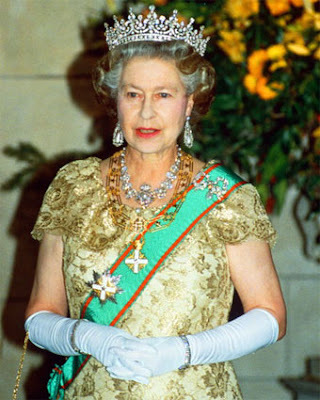
Of the many pupils fondly remembered by Horace Smith, Royal Riding Master throughout the reigns of six British Monarchs, one young rider was always held in the very highest esteem. At the age of 12, having already distinguished herself as a gifted and eager horsewoman, Princess Elizabeth confided to her teacher that, had she not been born to be Queen, she would “like to be a lady living in the country with lots of horses and dogs”. These youthful remarks are revealing indeed, demonstrating not only a genuine passion for an aspect of Royal life that outsiders often dismiss as mere pomp and ceremony, but also for a remarkable degree of prescience and acuity. Even as a child, Princess Elizabeth understood the full significance of the role into which she had been born; and yet coupled with that awareness was an ardent desire to lead a simple, traditional country life. Little could the Princess have imagined then just how prophetic her words would be; for it is perhaps this blend of her sense of regal duty with a love of simple pleasures that came so uniquely to characterise the style of Elizabeth II’s reign.
Princess Elizabeth Alexandra Mary was born in London at 17 Bruton Street, at 2.40am on April 21, 1926. She was the first child of the Duke and Duchess of York, subsequently King George VI and Queen Elizabeth. With the Victorian era not three decades past, it might appear peculiar that Elizabeth’s parents applied so thoroughly modern a manner of bringing up their daughter – for, from the outset, it was decided that the Princess’s life was to be as normal as possible. No longer was the future Monarch to be sheltered from her people’s concerns by Royal excess and opulence; instead, she was to understand the inescapable reality of a nation still coming to terms with the loss of so many of its sons in the First World War. She was born in the year of the General Strike, and British society was undergoing a profound change. Accordingly, the Duke and Duchess of York were determined that Elizabeth should neither be shielded nor spoilt.
Much of the Princess’s early years were spent at the family home at 145 Piccadilly. Her parents’ commitment to providing the future Queen with an appreciation of both her privileges and her responsibilities was absolute. Yet Princess Elizabeth’s first year of life proved a rather solitary affair. Duty-bound to undertake an official visit to Australia in order to open its new Commonwealth Parliament, her parents were obliged to leave her in the hands of her nanny, Clara “Alla” Knight. This early separation was not as traumatic as one might expect – on the contrary, it served to forge an unbreakable bond between Elizabeth and her grandparents. King George V and Queen Mary were immediately entranced by their granddaughter, and proudly informed her parents of every new tooth and word.
 When the Yorks returned in June 1927, they found a loving, confident, and slightly mischievous child. “Tillabet”, as the Princess referred to herself, was always ready to amuse. During that year’s Christmas party for the tenants of the Sandringham Estate, she clambered on to the dining-table and proceeded to pelt the guests with cracker after cracker, handed to her by her mother. Her well-developed sense of fun was equally evident in the games that she persuaded her grandfather to play with her. The Archbishop of Canterbury was once utterly discombobulated when, upon attending an audience with George V, he found the King crawling on all fours across the floor, pretending to be a horse, and the young Princess taking the role of groom.
When the Yorks returned in June 1927, they found a loving, confident, and slightly mischievous child. “Tillabet”, as the Princess referred to herself, was always ready to amuse. During that year’s Christmas party for the tenants of the Sandringham Estate, she clambered on to the dining-table and proceeded to pelt the guests with cracker after cracker, handed to her by her mother. Her well-developed sense of fun was equally evident in the games that she persuaded her grandfather to play with her. The Archbishop of Canterbury was once utterly discombobulated when, upon attending an audience with George V, he found the King crawling on all fours across the floor, pretending to be a horse, and the young Princess taking the role of groom.
By 1936, the elderly Monarch was dead, and “Tillabet” had become “Lilibet”, the affectionate name by which she is known to her Family to this very day. She had gained a little sister, five years previously, with the birth of Princess Margaret. Princess Elizabeth was initially educated at home, although the Duchess of York had always harboured the hope that one day her daughter would attend public school, and thus learn about matters both intellectual and social. This, however was not to be, as the new King, Edward VIII, had decided that it would not do for a Princess to be educated alongside commoners, and thus Elizabeth received the entirety of her instruction in private.
Given contemporary circumstances, it may well have been the case that the King was merely trying to minimise the level of press scrutiny on the affairs of the Royal Family. His relationship with Wallis Simpson was soon to become the United Kingdom’s most popular source of common gossip, and there can be little doubt that he was apprehensive as to the public reaction when news of her divorce came to light. By the end of 1937, Elizabeth’s life had changed dramatically: Edward VIII had abdicated, her father had been crowned King George VI, and she was Heiress Presumptive to the Throne.
Despite the requisite move to Buckingham Palace, and the ever-increasing pressure of life as the daughter of the King, the 11-year-old Elizabeth was essentially unchanged. Her propensity for pranks and play had been replaced by a more mature and responsible attitude to life and duty, but her formidable sense of humour remained very much intact.
As befitted an Heiress Presumptive, she took it upon herself to discover all she could about the matters that would one day form the basis of her ruling life. She began to attend lessons in constitutional history at Eton College, one of England’s most illustrious and intellectually demanding public schools. Soon, her love of all things historical led her to broaden her education in order to take in the history of Europe. A famous anecdote recounts the occasion on which Princess Marie Louise apologised to her fellow guests at a dinner party held at Windsor Castle for having spoken for so long about her life. With her customary warmth and sincerity, Princess Elizabeth answered: “But Cousin Louise, it’s history, and therefore so thrilling!”
The Princess’s idyllic days of study and self-improvement were soon to be curtailed by the menacing shadow that had fallen over Europe. Hitler’s National Socialist Party, in power since 1933, held Germany in its thrall, and, once again unified with Austria, was threatening to drag the world into another bloody conflict. When war came in September 1939, the people of Great Britain dug deeply, and pulled together as never before. The arbitrary divisions of class were rapidly cast aside as London was pounded by the full force of Germany’s Luftwaffe aircraft.
Princess Elizabeth decided it was time to show that she was ready to assume the full weight of her Royal responsibilities. Realising the need to boost morale, she became patron of organisations whose work she valued. Already President of charities such as the Queen Elizabeth Hospital for Children in Hackney, east London, and the National Society for the Prevention of Cruelty to Children, she embarked on a series of national visits with the King and Queen. She first bore the full weight of regal office at the age of 18, in 1944, when, during the King’s absence on a tour of the Italian battlefields, she performed many of the official duties of Head of State.
Click Here For Complete ProfileThursday, September 11, 2008
The 10 Most Dastardly Dudes of all time!! Worth A Read!!
Throughout time, scientist of one school or another have contributed great innovations to the world of medicine, alchemy, chemistry, physics, and more. Most of these gifts have been exceedingly useful and set the stage for even greater advances in the field. However, the coin has another side… a far more sinister and selfish side that somehow twists the very minds of the scientists making them want to do more harm than help. Granted, said scientific minds often believe that the evils that they are ultimately performing are doing good, and this is what truly makes these individuals mad. Here are ten of the most diabolical scientific minds in history.

9. Dr. J. Robert Oppenheimer 1904-1967

Heading up the Manhattan Project, the very group responsible for the creation and use of the atomic bomb, Dr. Oppenheimer was a brilliant nuclear physicist. Oppenheimer said he was “a member of just about every Communist Front organization on the West Coast,” a subscriber to the People’s World, a Communist Party organ, and, he testified, “I was associated with the Communist movement.” He claimed to be horrified by the result of the project’s work. A co-worker, Victor Weisskopf said:
He did not direct from the head office. He was intellectually and even physically present at each decisive step. He was present in the laboratory or in the seminar rooms, when a new effect was measured, when a new idea was conceived. It was not that he contributed so many ideas or suggestions; he did so sometimes, but his main influence came from something else. It was his continuous and intense presence, which produced a sense of direct participation in all of us; it created that unique atmosphere of enthusiasm and challenge that pervaded the place throughout its time.
8. Alfred Nobel 1833-1897

Discovering the use of nitroglycerine in his invention of dynamite, Nobel gave the world its first mass-produced use of deadly explosives. Killing first his own brother Emil and several others in a factory accident, the future death toll from his creation will number in the hundreds of thousands. Eventually he used his significant earned wealth to fund the yearly Nobel Prize to distract people from his invention, after reading his own obituary (mistakenly printed as he was not actually dead) which called him the “Merchant of Death”.
7. Trofim Lysenko

While his experiments did not result in mass deaths, Lysenko needs to be on this list for his utter dishonesty in the field of Science that ultimately set the
“In order to obtain a certain result, You must want to obtain precisely that result; if you want to obtain a certain result, you will obtain it …. I need only such people as will obtain the results I need.” Lysenko
Kevorkian is most noted for publicly championing a terminal patient’s right to die via physician-assisted suicide and claims to have assisted at least 130 patients to that end. Imprisoned in 1999, he served eight years out of his 10-to-25-year prison sentence for second-degree murder in the 1998 poisoning of Thomas Youk, 52, of
“You were on bond to another judge when you committed this offense, you were not licensed to practice medicine when you committed this offense and you hadn’t been licensed for eight years. And you had the audacity to go on national television, show the world what you did and dare the legal system to stop you. Well, sir, consider yourself stopped.”
Regardless of your views on euthanasia, the fact remains that Kevorkian swore an oath to save lives, not to take them.
5. Members of the 

For forty years between 1932 and 1972, the U.S. Public Health Service (PHS) conducted an experiment on 399 black men (mostly impoverished and poorly educated share-croppers) in the late stages of syphilis. The essence was to gather data on the course of the disease when left untreated. The researchers understood from the outset that test subjects would provide most of their useful information in the form of autopsies, so great pains were taken to insure that subjects didn’t obtain medical care elsewhere. The program came to an abrupt halt in 1972 when its existence was made public by the Washington Star. It would be easy to dismiss this as a case of simple racism by a public institution, but that is not the case: The project was enthusiastically hosted by the Tuskeegee Institute, a historically black college, and many key researchers and staff on the project were, themselves, black.
4. Johann Konrad Dippel 1673-1734
 Dippel was born at Castle Frankenstein and is rumored to be the inspiration for Shelley’s vile doctor. This is disputable, but what isn’t is the fact that this brilliant doctor performed vivisections on many recipients. Working with nitroglycerin he destroyed a tower, but also detected the medicinal use of it. It is rumored that he also preformed gruesome experiments within this tower with so called “cadavers”. Though the actual details of the experiments have never been truly confirmed it is rumored that he attempted to transfer the soul of one cadaver into another. Interestingly, his greatest contribution to the world was his animal oil (Dippel’s oil: a nitrogenous by-product of the destructive distillation manufacture of bone char) commonly known as a base product in Prussian blue - the low cost blue dye that is used to this day by artists; previously, blue dies were extremely expensive to create.
Dippel was born at Castle Frankenstein and is rumored to be the inspiration for Shelley’s vile doctor. This is disputable, but what isn’t is the fact that this brilliant doctor performed vivisections on many recipients. Working with nitroglycerin he destroyed a tower, but also detected the medicinal use of it. It is rumored that he also preformed gruesome experiments within this tower with so called “cadavers”. Though the actual details of the experiments have never been truly confirmed it is rumored that he attempted to transfer the soul of one cadaver into another. Interestingly, his greatest contribution to the world was his animal oil (Dippel’s oil: a nitrogenous by-product of the destructive distillation manufacture of bone char) commonly known as a base product in Prussian blue - the low cost blue dye that is used to this day by artists; previously, blue dies were extremely expensive to create.
3. Dr. Sigmund Rascher 1909-1945

Rascher was a despicable scientist during the Nazi use of concentration camps during WWII. Rascher’s infamous medical experiments at the Dachau concentration camp included hypothermia research in which three hundred test subjects were used against their will (one third of them perished), in high-altitude, malaria and medication experiments. At
2. Dr. Joseph Mengele 1911-1979
Tengele gained notoriety chiefly for being one of the SS physicians who supervised the selection of arriving transports of prisoners, determining who was to be killed and who was to become a forced laborer, and for performing human experiments on camp inmates, amongst whom Mengele was known as the Angel of Death. On several occasions he killed subjects simply to be able to dissect them afterwards.
Ishii was a microbiologist and the lieutenant general of Unit 731, a biological warfare unit of the Imperial Japanese Army during the Second Sino-Japanese War. He was born in the former Shibayama Village of Sanbu District in
Some of the numerous atrocities committed by Ishii and others under his command in Unit 731 include: vivisection of living people (including pregnant women who were impregnated by the doctors), prisoners had limbs amputated and reattached to other parts of their body, some prisoners had parts of their bodies frozen and thawed to study the resulting untreated gangrene. Humans were also used as living test cases for grenades and flame throwers. Prisoners were injected with inoculations of disease, disguised as vaccinations, to study their effects. To study the effects of untreated venereal diseases, male and female prisoners were deliberately infected with syphilis and gonorrhea via rape, then studied. A complete list of these horrors can be found here.
Having been granted immunity by the American Occupation Authorities at the end of the war, Ishii never spent any time in jail for his crimes and died at the age of 67 of throat cancer.
Bonus: Daedalus
 Granted he is a character of legend, but Daedalus deserves a place on any list of this type because he is probably the first recorded mad/evil scientist. Daedalus is often credited with inventing the very first labyrinth in which he imprisoned the step-son of King Minos, a minotaur. He is also, sadly, charged with killing his own son, though inadvertently, by creating Icarus and himself a set of wings used to escape his very own labyrinth. Icarus didn’t heed his father’s warnings about flying too close to the sun, thus melting his wings and plummeting to the earth.
Granted he is a character of legend, but Daedalus deserves a place on any list of this type because he is probably the first recorded mad/evil scientist. Daedalus is often credited with inventing the very first labyrinth in which he imprisoned the step-son of King Minos, a minotaur. He is also, sadly, charged with killing his own son, though inadvertently, by creating Icarus and himself a set of wings used to escape his very own labyrinth. Icarus didn’t heed his father’s warnings about flying too close to the sun, thus melting his wings and plummeting to the earth.
Source: The List Universe
Wednesday, September 10, 2008
Booker Prize winners
2007 Anne Enright The Gathering
2006 Kiran Desai The Inheritance of Loss
2005 John Banville The Sea
2004 Alan Hollinghurst The Line of Beauty
2003 DBC Pierre Vernon God Little
2002 Yann Martel Life of Pi
2001 Peter Carey True History of the Kelly Gang
2000 Margaret Atwood The Blind Assassin
1999 J M Coetzee Disgrace
1998 Ian McEwan Amsterdam
1997 Arundhati Roy The God of Small Things
1996 Graham Swift Last Orders
1995 Pat Barker The Ghost Road
1994 James Kelman How Late It Was, How Late
1993 Roddy Doyle Paddy Clarke Ha Ha Ha
1992
Joint
Winners Michael Ondaatje &
Barry Unsworth The English Patient &
Sacred Hunger
1991 Ben Okri The Famished Road
1990 A S Byatt Possession
1989 Kazuo Ishiguro The Remains of the Day
1988 Peter Carey Oscar and Lucinda
1987 Penelope Lively Moon Tiger
1986 Kingsley Amis The Old Devils
1985 Keri Hulme The Bone People
1984 Anita Brookner Hotel du Lac
1983 J M Coetzee Life & Times of Michael K
1982 Thomas Keneally Schindler's Ark
1981 Salman Rushdie Midnight's Children
1980 William Golding Rites of Passage
1979 Penelope Fitzgerald Offshore
1978 Iris Murdoch The Sea
1977 Paul Scott Staying On
1976 David Storey Saville
1975 Ruth Prawer
Jhabvala Heat and Dust
1974
Joint
Winners Nadine Gordimer & The Conservationist Holiday
Stanley Middleton
1973 J G Farrell The Siege of Krishnapur
1972 John Berger G
1971 V S Naipaul In a Free State
1970 Bernice Rubens The Elected Member
1969 P H Newby Something to Answer For
Authors shortlisted for the Booker 2008

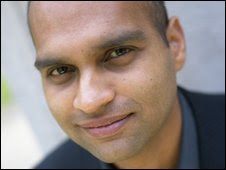
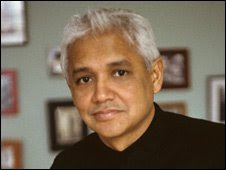

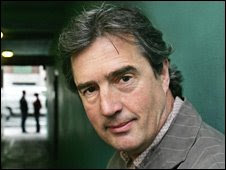

The shortlist for this year's Booker Prize for Fiction has been announced. Here is a quick guide to the six authors who made the grade.
ARAVIND ADIGA - THE WHITE TIGER
Adiga was born in Madras and was raised in India and Australia before studying at Columbia University in New York and Oxford University. He is a former correspondent for Time magazine and has written for the Independent, and the Sunday Times.
The White Tiger, a tale of two Indias, tells the story of Balram, the son of a rickshaw puller in the heartlands. It charts his journey from working in a teashop to entrepreneurial success.
SEBASTIAN BARRY - THE SECRET SCRIPTURE
Dublin-born Barry has written a number of plays and novels, winning many prizes along the way. His novel A Long Long Way was shortlisted for the Booker in 2005.
The Secret Scripture, told through the journals of Roseanne McNulty and her psychiatrist, is the story of a life blighted by mistreatment - and yet still marked by love and hope - in 1930s Sligo. Through the haze of memory, Roseanne's story acts as an alternative, secret history of Ireland.
AMITAV GHOSH - SEA OF POPPIES
Ghosh is one of India's most popular writers whose books include The Circle of Reason, The Shadow Lines and The Hungry Tide. He is married to writer Deborah Baker.
Sea of Poppies, the first volume of his Ibis Trilogy, throws together a diverse cast of Indians - from a widowed villager to an evangelical English opium trader - at a time of colonial upheaval.
LINDA GRANT - THE CLOTHES ON THEIR BACKS
Liverpool-born Grant, the child of Russian and Polish Jewish immigrants, studied English in York and Canada and later became an award-winning journalist with a weekly Guardian column. She was shortlisted for the Booker for 2002's Still Here.
The Clothes On Their Backs follows the story of Vivien, a sensitive, bookish girl whose slum landlord uncle, Sandor, is inexplicably unwelcome in her parents' home. Years later, after her husband has died and Sandor has served time in prison, their paths cross - giving Vivien the chance to learn the truth about her family history.
PHILIP HENSHER - THE NORTHERN CLEMENCY
Hensher divides his time between writing his novels and critiquing those of others in his role as chief book reviewer for The Spectator. His novel The Mulberry Empire made the longlist for the Booker in 2002, while Kitchen Venom won the Somerset Maughn Award.
The Northern Clemency, set in Sheffield, tells the story of two families living through the Thatcher era. The neighbouring friends are among a large cast of characters whose lives are played out over decades, offering a portrait of Britain's social landscape.
STEVE TOLTZ - A FRACTION OF THE WHOLE
Australian author Toltz, who has made the shortlist with his first novel, has travelled and lived around the world, spending time in Canada, Spain and France. His varied career has seen him work as a private investigator, English teacher and screenwriter.
Epic novel A Fraction of the Whole meanders through the life of the dysfunctional Jasper Dean and details his relationship with his odd-ball father. The book, which has drawn comparisons with cult classic The Confederacy of Dunces, covers a multitude of whimsical adventures from strip clubs to asylums.
Tuesday, September 9, 2008
Scientist's set to create an artificial Big Bang.

By ALEXANDER G. HIGGINS, Associated Press WriterSun Sep 7, 2:52 PM ET
It has been called an Alice in Wonderland investigation into the makeup of the universe — or dangerous tampering with nature that could spell doomsday.
Whatever the case, the most powerful atom-smasher ever built comes online Wednesday, eagerly anticipated by scientists worldwide who have awaited this moment for two decades.
The multibillion-dollar Large Hadron Collider will explore the tiniest particles and come ever closer to re-enacting the big bang, the theory that a colossal explosion created the universe.
The machine at CERN, the European Organization for Nuclear Research, promises scientists a closer look at the makeup of matter, filling in gaps in knowledge or possibly reshaping theories.
The first beams of protons will be fired around the 17-mile tunnel to test the controlling strength of the world's largest superconducting magnets. It will still be about a month before beams traveling in opposite directions are brought together in collisions that some skeptics fear could create micro "black holes" and endanger the planet.
The project has attracted researchers of 80 nationalities, some 1,200 of them from the United States, which contributed $531 million of the project's price tag of nearly $4 billion.
"This only happens once a generation," said Katie Yurkewicz, spokeswoman for the U.S. contingent at the CERN project. "People are certainly very excited."
The collider at Fermilab outside Chicago could beat CERN to some discoveries, but the Geneva equipment, generating seven times more energy than Fermilab, will give it big advantages.
The CERN collider is designed to push the proton beam close to the speed of light, whizzing 11,000 times a second around the tunnel 150 to 500 feet under the bucolic countryside on the French-Swiss border.
Once the beam is successfully fired counterclockwise, a clockwise test will follow. Then the scientists will aim the beams at each other so that protons collide, shattering into fragments and releasing energy under the gaze of detectors filling cathedral-sized caverns at points along the tunnel.
CERN dismisses the risk of micro black holes, subatomic versions of collapsed stars whose gravity is so strong they can suck in planets and other stars.
But the skeptics have filed suit in U.S. District Court in Hawaii and in the European Court of Human Rights to stop the project. They unsuccessfully mounted a similar action in 1999 to block the Relativistic Heavy Ion Collider at the Brookhaven National Laboratory in New York state.
CERN's collider has been under construction since 2003, financed mostly by its 20 European member states. The United States and Japan are major contributors with observer status in CERN.
Scientists started colliding subatomic particles decades ago. As the machines grew more powerful, the experiments revealed that protons and neutrons — previously thought to be the smallest components of an atom — were made of still smaller quarks and gluons.
CERN hopes to recreate conditions in the laboratory a split-second after the big bang, teaching them more about "dark matter," antimatter and possibly hidden dimensions of space and time.
Meanwhile, scientists have found innovative ways to explain the concept in layman's terms.
The team working on one of the four major installations in the tunnel — the ALICE, or "A Large Ion Collider Experiment" — produced a comic book featuring Carlo the physicist and a girl called Alice to explain the machine's investigation of matter a split second after the Big Bang.
"We create mini Big Bangs by bumping two nuclei into each other," Carlo explains to Alice, who has just followed a rabbit down one of the hole-like shafts at CERN.
"This releases an enormous amount of energy that liberates thousands of quarks and gluons normally imprisoned inside the nucleus. Quarks and gluons then form a kind of thick soup that we call the quark-gluon plasma."
The soup cools quickly and the quarks and gluons stick together to form protons and neutrons, the building blocks of matter.
That will enable scientists to look for still missing pieces to the puzzle — or lead to the formulation of a new theory on the makeup of matter.
Kate McAlpine, 23, a Michigan State University graduate at CERN, has produced the Large Hadron Rap, a video clip that has attracted more than a million views on YouTube.
"The things that it discovers will rock you in the head," McAlpine raps as she dances in the tunnel and caverns.
CERN spokesman James Gillies said the lyrics are "absolutely scientifically spot on."
"It's quite brilliant," Gillies said.
___
On the Net:
CERN: http://www.cern.ch
Fermi National Accelerator Laboratory: http://www.fnal.gov
The U.S. at the LHC: http://www.uslhc.us/
Large Hadron Rap: http://www.youtube.com/watch?vf6aU-wFSqt0
Source: Yahoo News
Don Bradman's Cricket Records
The cricketing world remembered Sir Donald Bradman, its greatest ever batsman on his centenary very recently.
Much has been written about Sir Donald during his career, and probably even more has been written since his retirement from test cricket in 1948. However, his impact and influence on the game can probably best be summed up by a simple comparison of his batting average and those who come closest to approaching it.
Sir Donald averaged 99.94 in test matches and the next best are three players each averaging just a fraction over 60 - R G Pollock (SAF, 60.97), G A Headley (WIN, 60.83) and H Sutcliffe (ENG, 60.73). Highest Batting Averages
Set out below are some Sir Donald's major achievements.
First Class Career Record
M Inns NO 100s HS Runs Avg
234 338 43 117 *452 28,067 95.14
In
.
M Inns NO 50s 100s HS Runs Avg
62 96 15 20 36 *452 8,926 110.19
Test Career Record
Sir Donald's test career batting statistics are unique, and an analysis of his batting broken down by opponent is given below.
Versus M Inns NO 50s 100s HS Runs Avg Ca St
Overall 52 80 10 13 29 334 6996 99.94 32 0
Bradman's batting average exceeded 100 on five grounds.
His batting average exceeded 100 in 7 of the 13 Calendar years in which he played.
His batting statistics, average 103.63, at No 3 in the batting order, undoubtedly make him the best ever in that position.
He scored 29 centuries from 80 innings, (36.25%) The next highest was 25.00% Highest Hundreds per Innnings Percentage. He scored 12 double centuries. The next highest is 7 Most Double Hundreds. He was the only player to score 2 triple centuries. (334 & 304), and was only 1 run from making it 3 (299* v SAF ), Virender Sehwag recently matched the Don with two triple centuries.
On 3 occasions he scored 4 centuries in a series. 1930 v
He has scored the most double centuries in a series. 3 against
Sir Donald holds the record for the highest score for a player batting at number 5 in the batting order (304) as well as the record for the highest score for a player batting at number 7 in the batting order (270) Highest Innings for Each Batting Position.
He holds the record for the most runs scored in a 5 Test series (947 v
He holds the record for the highest Test innings at 4 Grounds.
299 not out Adelaide Oval
223 Exhibition Ground
226
334 Headingley
He scored the fastest 200 in Test Cricket, 214 minutes at Headingley in 1934 and has scored the most runs in a day, 309 at Headingley in 1930. He scored a century in a session on 6 occasions.
He holds 2 World Test wicket Partnerships Records:
405 5th wicket with S G Barnes v
346 6th wicket with J H Fingleton v
In additional to the 2 World Test records above he holds 2 Australian Test wicket Partnership Records:
451 2nd wicket with W H Ponsford v
388 4th wicket with W H Ponsford v
Sir Donald captained
In addition to his feats on the field, Sir Donald was a highly respected administrator and was tireless in his efforts in promoting cricket around the world.
"It is strange, but I think true, that all the time, day and night, somewhere in the world somebody is talking about Bradman." (Jack Ingham - English Sportswriter)
India's Nuclear Journey Has Only Begun
If the test of Pokhran was a show of strengths and had more relevance with to respect military deterrence and on a national security perspective, this recent episode in India's nuclear history will provide the fruit of this technology to the general masses more so than ever.
People in India know more the destructive capabilities of this energy and have thus looked down upon it as a war making and life threating technology. But with India looking to embrace this technology to bring, light, warmth and power to its people, under the visionary and steadfast leadership of Prime Minister Manmohan Singh, the image of this energy will get a drastic makeover, and soon will be looked upon a technology which has the power to give life, and make life much easier for many in India who have not known what power and energy can do to enhance the quality of their life, and even if they knew are unable to have access to it anytime soon.
Here's hoping that this energy will bring all that the the current leadership of India has promised and much more. My thumps up for a technology for a oil deficient nations like India. Following in the footsteps of India, many other countries are likely to adopt this technology as the most viable option to guarantee the energy security for their people.
The coming years will reveal the far reaching impact of this day evident to all. I hope by then India will have taken giant steps on its way to realize its Nuclear ambitions. Here's hoping for the best!!!
Wednesday, September 3, 2008
Cuisine - e -Azam's Monsoon Delicacies
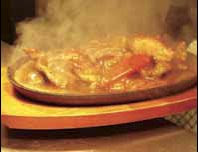

Kranti Khanderkar discovers Chef Kaviraj and some of his delicious recipes of this season.
A delicious mix of Oriental, Indian and Continental cuisines; we wonder what it takes to orchestrate such a lavish fare. Nothing but sheer talent and skill. And this is the trademark of a truly talented and gifted Chef like Chef Kaviraj Kihlani.
Kaviraj Kahilani aka Chef Kaviraj has around 12 years of experience in Hotel Management & Catering Technology. He is the author of a book named Arabic Cookery. He has worked in many reputed hotels like Hotel Sun-n-Sand, Mumbai, Taj Group, and Kuwait Airways as a sky chef and trainer for cabin crew services.
Kaviraj has been in the teaching profession from many years. He has taught in many recognized colleges. And currently he is a Principal of Mumbai College of Hotel Management & Catering Technology, Mira Road.
He entered this profession because of his interest and his fondness for teaching. “I gained a wealth of knowledge from an early age. And I wanted to share this information and knowledge that I had acquired for myself, so I thought teaching will be the best option, and therefore began my teaching career as a teacher of cooking and hotel management in various colleges,” Kaviraj expressed.
Kaviraj had been interested in cooking right from the time he was a small child. His mother was a fantastic cook and little Kaviraj spent hours watching his mother cook tasty and aromatic delicacies in his kitchen. According to him, his mother inspired him a lot to get the basic things (cutting, chopping and making my own food in the house-hold) right and soon made up my mind to pursue this as a profession.
“I used to see my mom in the kitchen preparing a variety of food items. I always followed her in her cooking activities, which I think helped me become an expert in this field,” He said reminiscing of a younger days.
Kaviraj’s mother is very proud of him, as has become, sort of cooking connoisseur at a relatively young age. “Kaviraj obtained excellence in coming up with his unique fusion recipes. He loves to teach and meet different kinds of people.
I always use three words to describe him. First is committed, second competitive and third is compatible,” said Komal Kahilani, Kaviraj’s mother, who is also a certified diploma holder in cookery.
In spite of his keen interest in cooking, he also likes paintings, reading books of different genres, and listening to music.
With around 12 years of experienced in cooking, Kaviraj still loves to live the simple life. Though he has envisaged several delicious dishes for many food lovers, he likes to have steamed rice and Dal fry in his regular meal.
Kaviraj cooks like a dream – he uses interesting, innovative ideas to add that spike to daily meals. He has even a small research kitchen, especially to experiment with recipes to help bring to life the maximum number of taste buds.
Kaviraj is also keen in ensuring hygiene while preparing food. According to him, it is important that hygiene be maintained to the max in rainy season.
You can try some tangy-mildly spiced chaats with a touch of fusion into it, Chinese potato vada chaat, Mexican sev puries and some Malaysian ragda pattice could be mouth water-ing delicacies, it is basically to add a little more excitement while enjoying the down pour. Also some piping hot bowls of soups are ideal for those who like to be on the weight watch 24 x7. A corn broth or pureed corn and pepper soup,a roasted corn and baked bean shorba could be an ideal suggestion too. For desserts, I would prefer to go for some hot and warm concoctions like a malpua and kiwi rabdi sandwich, a warm bread and butter pud-ding with some rich chocolate walnut sauce, or some sweet corn pudding layered with coffee flavored cream cheese custard served with a brandy sauce.
Some flavoured dishes and desserts for this season recommended by him include:
You can try some tangy-mildly spiced chaats with a touch of fusion into it, Chinese potato vada chaat, Mexican sev puries and some Malaysian ragda pattice could be mouth watering delicacies, and it is basically to add a little more excitement while enjoying the down pour.
Also some piping hot bowls of soups are ideal for those who like to be on the weight catch 24x7. A corn broth or pureed corn and pepper soup, a roasted corn and baked bean shorba could be an ideal suggestion too.
For desserts, I would prefer to go for some hot and warm concoctions like a malpua and kiwi rabdi sandwich, a warm bread and butter pudding with some rich chocolate walnut sauce, or some sweet corn pudding layered with coffee flavored cream cheese custard served with a brandy sauce.
Get Seasonal




Fashion Fundas of Monsoon
Shilpa Dhanmeher, 29, a fashion designer said, “People are not at all looking clumsy during Monsoon. They are more concerned about their look in rainy season. Markets are flooded with some very feminist transparent and colourful knee length raincoats. Sporty and branded
Windcheaters are also in vogue this monsoon for boys. Big size, transparent and colourful bags are in getting popular. Also, a lot of stylish and colourful sports shoes and crocs in pink, light brown, blue are a fad during in this period.
Sharing cosmetic tips for the monsoon, make-up artist Rajashree Nayak said, “During Monsoon, one should go for waterproof make-up. For this you have to buy separate lipstick, foundation, lip gloss, eyeliner, pan cake, mascara according to your skin tone, as every person has different skin tone. If possible try bright, gloomy colours and use branded products such as L’Oreal and Maybelline, products which help to hold your make-up longer during rainy season.
Beads jewellery is appropriate for all the seasons and occasions, as there are varieties of beads
and designs available. Beads earrings, necklace, bracelets and ankle-lets are evergreen, as it never goes out of fashion. However, wooden and stone beads are really in fashion these days. You can buy beads of your choice which are easily available in the market today.
Priyanka, Interior designer, 23, said, “I prefer to use beads jewellery. They are not expensive, therefore you can have one each matching with your dresses. I have also bought match the colours of my dresses. The best part about beads is that it is available in lot of colours and varieties and I can also use them all season long.”
This monsoon brings you a lot of varieties in fashion, so go ahead
and enjoy rain, get wet and yet remain stylish and in.









